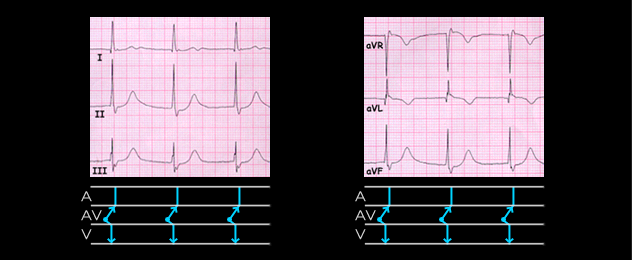
When the AV junctional rhythm originates below the region of the AV nodal delay, retrograde activation of the atria will either occur coincident with depolarization of the ventricles or after they have been depolarized and the retrograde P wave will either be hidden in the QRS complex, as was shown on the previous page, or will follow the QRS complex. This latter phenomenon is shown here. Note that there are no P waves preceding the QRS complexes. However, there are rather subtle deflections at the end of the QRS complexes. These are retrograde P waves. They are inverted in leads II, III and aVF and upright in lead aVR. In leads I and aVL they waves are of low amplitude and difficult to appreciate. The frontal plane axis of these retrograde P waves is -80 degrees, reflecting their inferior to superior orientation.
